Italian Cats
Italian cats have roamed the streets of Italy since ancient Roman times. In fact, the Romans, who adored cats for their independent spirits and held them in high regard for their ability to catch rats, helped spread domesticated felines throughout Europe.
Known for their intelligence, independence, and ability to thrive in protected feral cat communities, the cats of Italy are a central part of Italian culture, and are even trained to perform tricks, as well as to participate in obedience competitions.
Home / Italian Cats
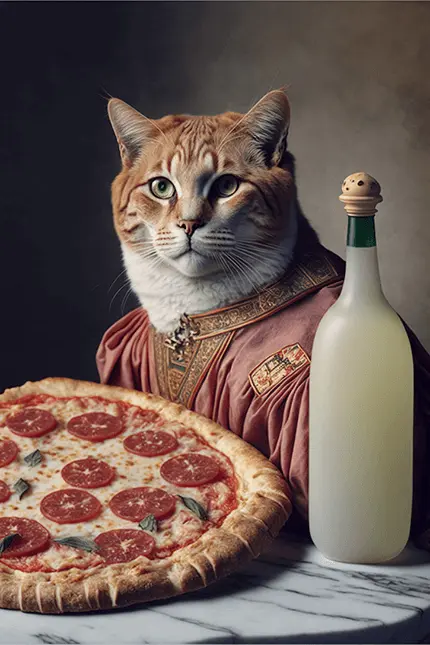
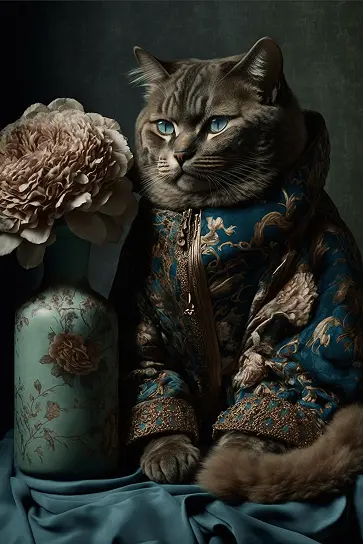
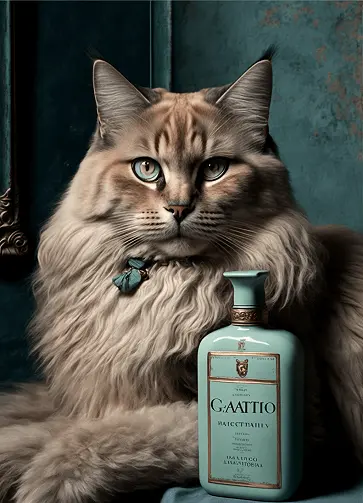
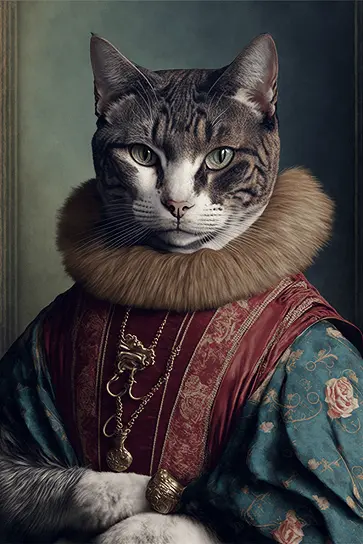
ARTICLES

Cat in Italian
How to say “cat” in Italian:
Il Gatto (Masculine)
Il Gatta (Feminine)
The Italian word for “cats” is gatti.
Italian Cat History
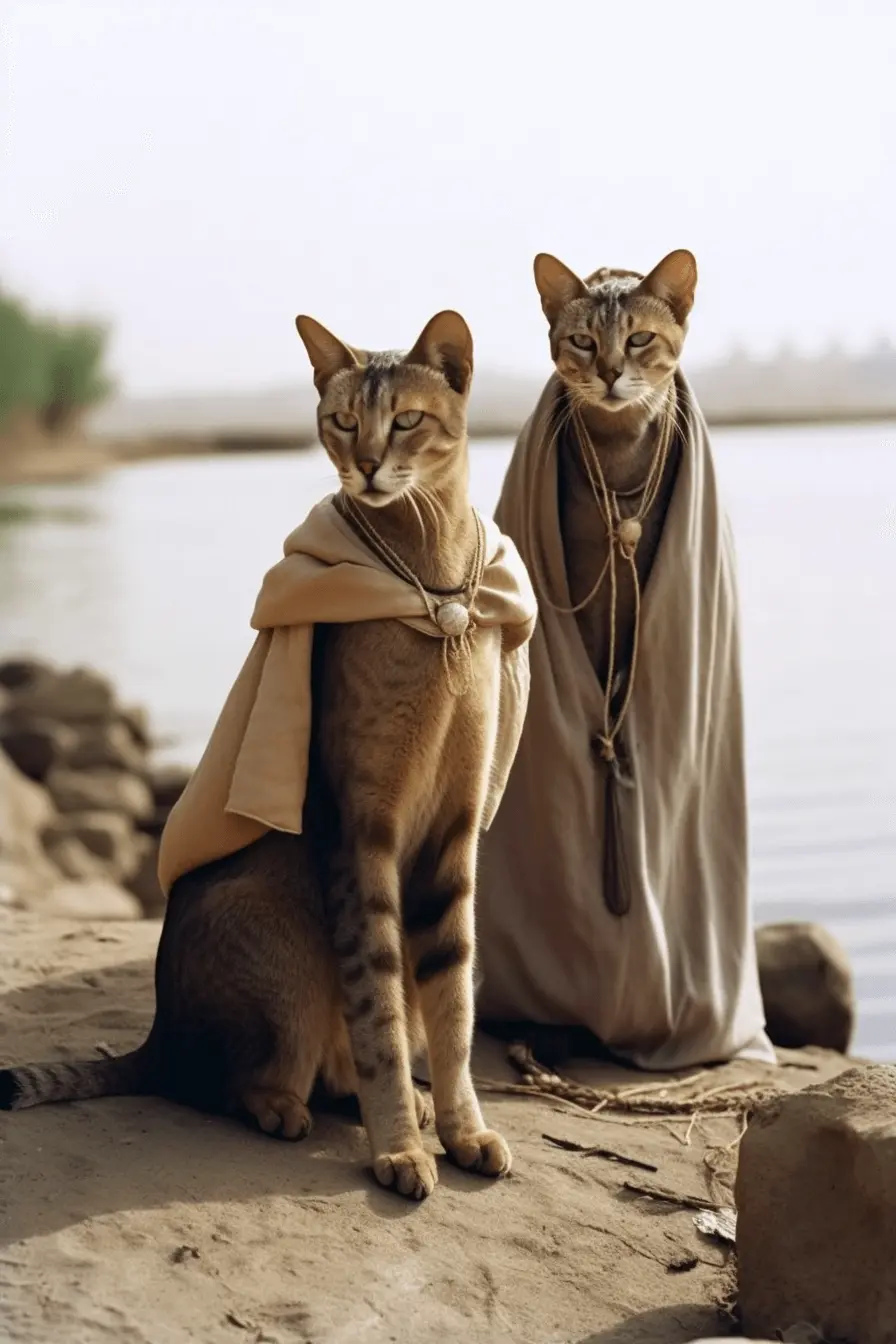
Italy boasts a long history of cat domestication, propagation, persecution, murder, and appreciation.
Cats have been kept as pets in Italy for over 2,000 years. Often depicted in art and literature as symbols of grace and elegance, Italian cats were once highly revered and even worshipped.
Italian cats are thought to come from Egypt the ancient Egyptians who domesticated African Wildcats to protect their food and homes from rodents. These domesticated Egyptian cats were later brought to Italy by the Romans.
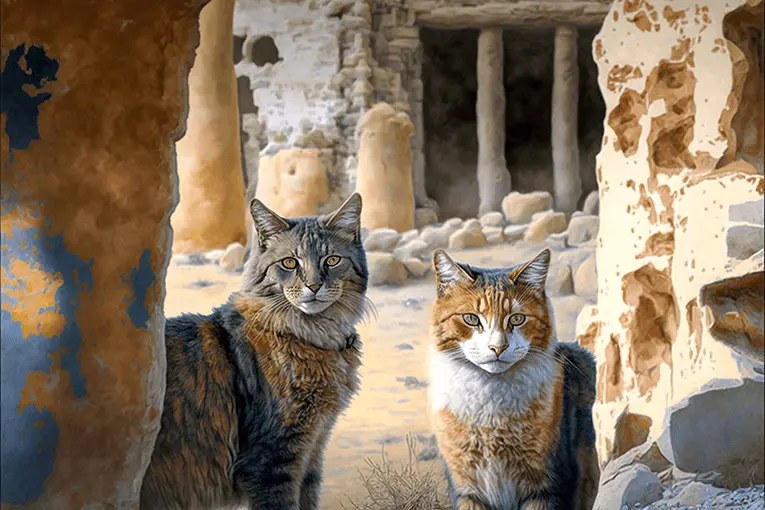
Cats In Ancient Rome
Wealthy families in ancient Rome kept cats as pets and believed they brought good luck.
Some owners even adorned their feline companions with jewelry and luxury items.
Following the Roman conquest of Egypt in 30 BCE, the goddess Isis and her companion Bastet, a cat-headed goddess, were imported to Rome.
The cat became an important symbol in the resulting Isis-Diana-Bastet religious cult, which gained popularity among women throughout Southern Europe.
Some Roman families believed that cats could predict the future and would pay close attention to their cat’s behavior and movements in order to glean insights into what was to come.
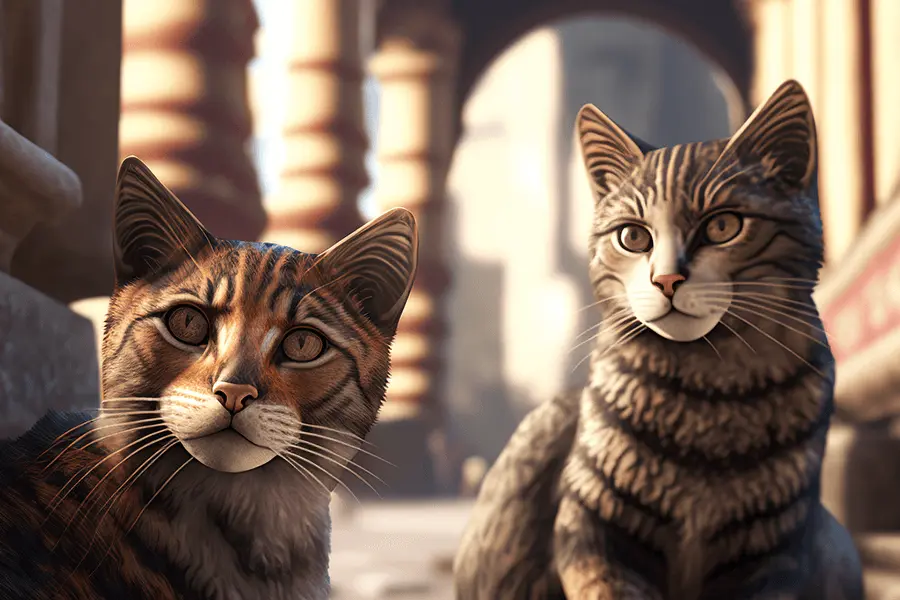

Roman Working Cats
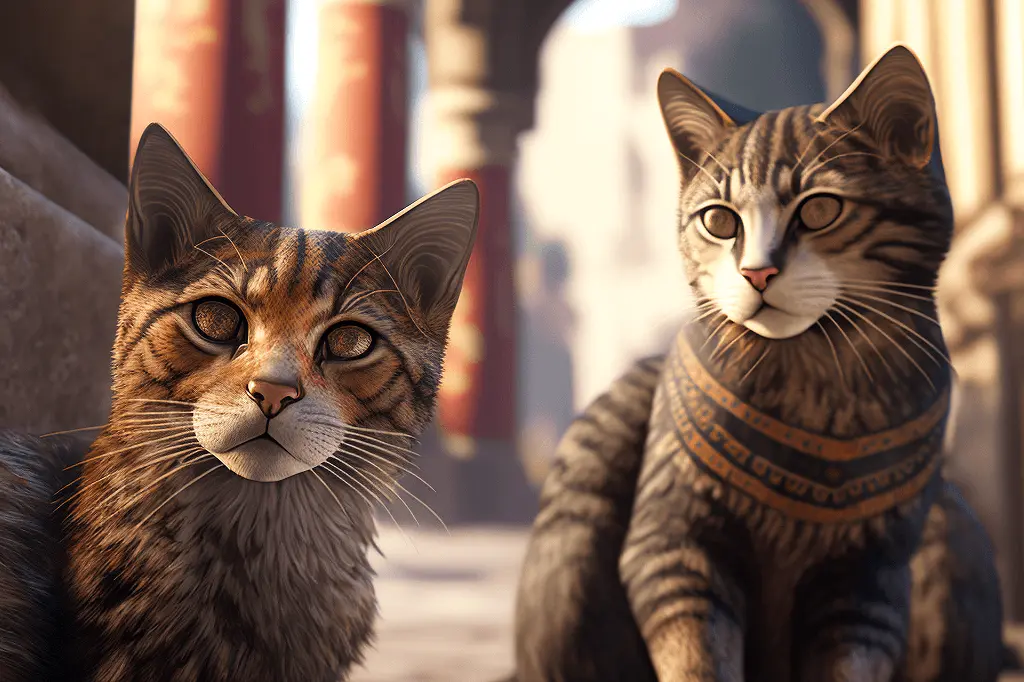
In ancient Rome, cats were mostly found in ports and commercial areas, where they were employed to control rat populations. They were not kept as pets as often as they were in Egyptian families but were used mainly as a way to protect food and grain stores from rodents.
The Roman Army brought cats with them on their travels as a form of pest control, spreading cats across Europe to protect Roman food supplies and as symbols of good luck. (Torrey, 2021)
Cats in Medieval Italy (400-1453 AD)
During the Medieval ages, also known as the Middle Ages, and well into the early and mid Renaissance, a time period that spanned from the 5th through the 15th centuries, the status of Italian cats, like the Western Roman Empire, took a turn for the worse.
With the fall of the Western Roman empire in the 5th century AD, the cats of Italy and greater Europe suffered a life altering blow.
The Roman Catholic Church led the cat crusades, launching a propaganda war against cats who suddenly morphed from revered icons of worship to evil devils necessitating extermination. in medieval Italy, as well as in other parts of Europe, due to their association with women, witchcraft, sexual promiscuity, and devil worship.
Throughout the middle ages, Christianity’s increasing dominance in Europe contributed to the negative perception of cats and single women in medieval Italy as well as in other parts of Europe. The cats’ main downfall was that the church associated them with the devil, women, witchcraft, sexual promiscuity, devil worship, and outspoken old ladies.
Catholic Church propaganda warned weary Italians that Satan and witches often transformed themselves into cats and therefore God sanctioned their killing.
As a result, many medieval Italian cats were hunted down or driven away by angry old men.

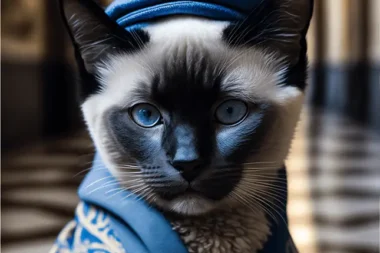
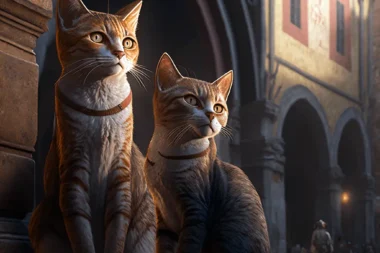
Women, Witches, And Cats In The Middle Ages
During the Middle Ages, cats were often kept as pets by Italian women, especially older women who lived alone, and were seen as symbols of female sexuality, promiscuity and independence.
These beliefs about cats were not unique to Italy, but rather common throughout Europe during the medieval period.
Many people also believed that witches were able to transform themselves into cats, and that cats were their familiars, or spirit animals.
It was believed that cats could change their mate often.
The association of Italian cats with promiscuity and witchcraft led to a belief that cats were evil and should be eliminated.
In the 14th century, Pope Innocent VIII issued a papal decree that authorized the killing of cats, along with other animals associated with witchcraft, such as bats and owls.
This led to widespread persecution of cats throughout Europe, and many were hunted and killed.
The cat’s nocturnal nature and its tendency to wander outside at night were seen as symbols of promiscuity and licentious behavior. That cats were often observed to be mating, with multiple partners, and breeding multiple times a year, also contributed to the belief that cats were symbols of promiscuity.
Rooted in misogyny, these beliefs were used to control women’s behavior, as well as to justify the persecution of women, witches, and cats. Though these superstitions had no basis in reality and cats acted and biology, medieval men would not hear of this.
Three Gray Italian Kittens in Hot Springs
The association of Italian cats with promiscuity and witchcraft led to a belief that cats were evil and should be eliminated.
In the 14th century, Pope Innocent VIII issued a papal decree that authorized the killing of cats, along with other animals associated with witchcraft, such as bats and owls.
This led to widespread persecution of cats throughout Europe, and many were hunted and killed.
the cat’s nocturnal nature and its tendency to wander outside at night were seen as symbols of promiscuity and licentious behavior. That cats were often observed to be mating, with multiple partners, and breeding multiple times a year, also contributed to the belief that cats were symbols of promiscuity.
Rooted in misogyny, these beliefs were used to control women’s behavior, as well as to justify the persecution of women, witches, and cats. Though these superstitions had no basis in reality and cats acted and biology, medieval men would not hear of this.
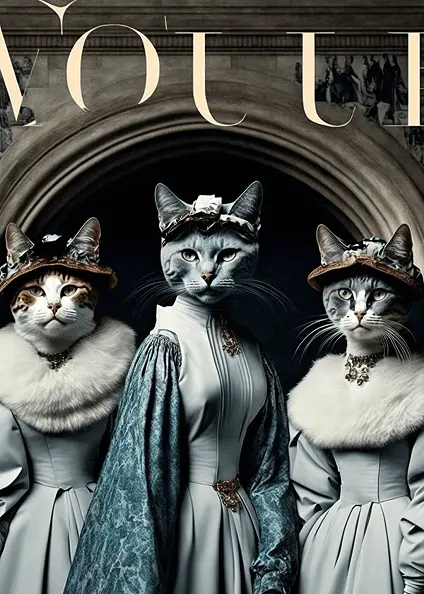
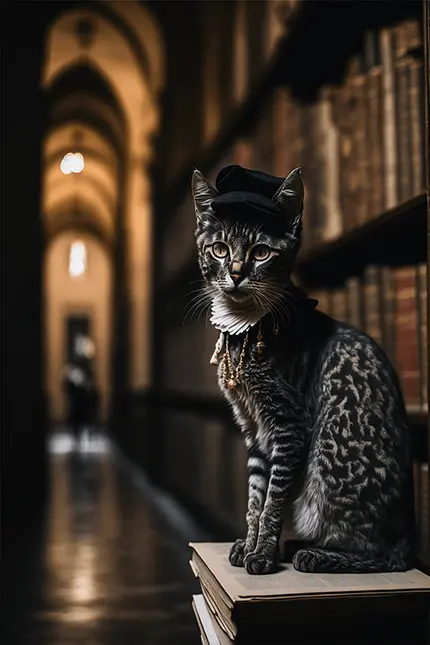
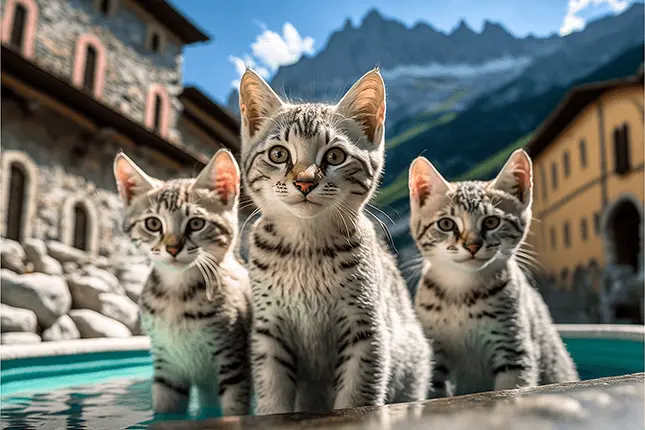

Italian Renaissance Cats (1300-1600 AD)
Throughout Western Europe, during the early Renaissance period, cats were tortured to drive out the devil, especially during Lent. Italians killed cats and buried them, threw live cats into bonfires, and threw cats off of towers as a public spectacle to spread god’s message throughout the land.
The association of cats with Satan can be seen in paintings from the Renaissance period, including Lorenzo Lotto’s 1535 painting of “The Annunciation” and Domenico Ghirlandaio’s 1481 painting of “The Last Supper”.


High Renaissance (1490-1527 AD)
During the high Renaissance period, there was a shift in attitudes towards cats, as well as other animals, and they began to be seen in a more positive light.
By the end of the Italian Renaissance, cats regained their popularity and were once again kept as pets by the wealthy.
However, the shift in attitudes towards cats was a gradual process, that took place over several centuries.
Though it’s difficult to pin down to a specific time when Italian attitudes towards cats began to shift, it appears that by the end of the High Renaissance (1490-1527 AD), cats regained favor.
Depicted in art as elegant and graceful animals, cats no longer represented evil or witchcraft.
This change in attitude was likely influenced by the cultural and intellectual changes of the period, as well as the influence of classical literature and art.
During the High Renaissance (1490–1527 AD), the art of the period reached its peak, and artists such as Leonardo da Vinci, Michelangelo, and Raphael created some of the most famous works of art in the world.
Cats began to be depicted in art in a more positive light, as elegant and graceful animals. This helped to shift attitudes towards cats, and they began to be seen as more than just symbols of evil.
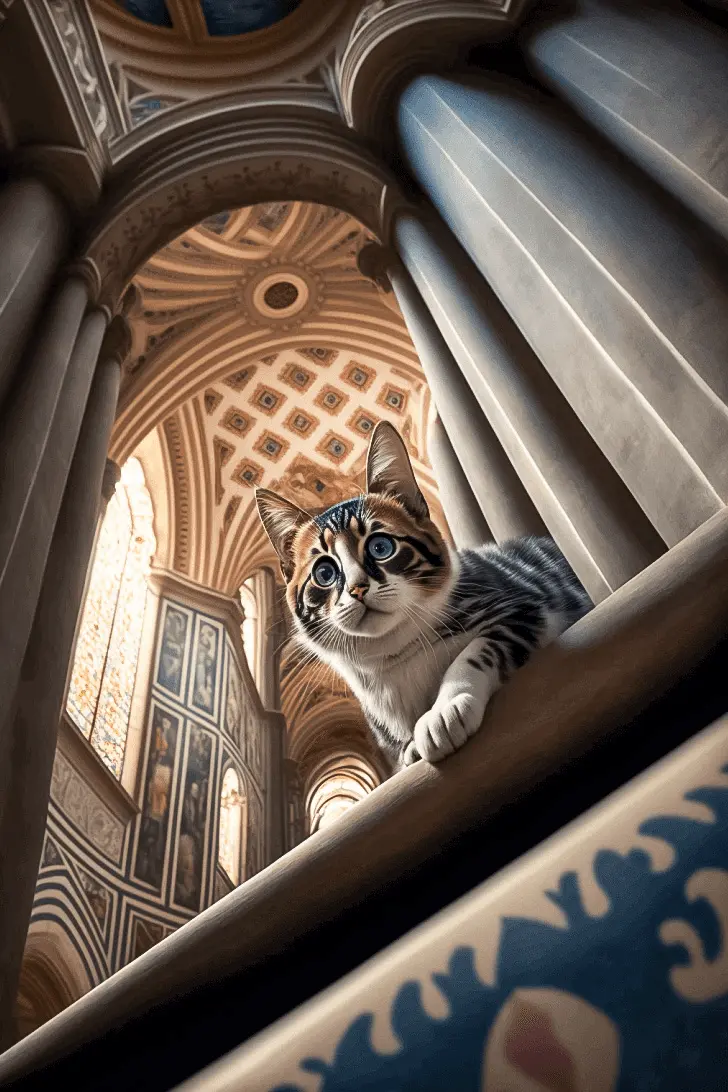
Late Renaissance (1527-1600 AD)
In the Late Renaissance (1527–1600 AD) the ideas of the High Renaissance continued to evolve and expand. Artists and intellectual of this time, continued to break free from medieval traditions and superstitions, and to look at the world with a fresh perspective. This led to further shift in attitudes towards cats, and they continued to be depicted in art as beloved pets.
It’s worth noting that it took some time for this change in attitudes towards cats to fully take hold. The belief that cats were evil had been deeply ingrained in society for centuries, and it did not disappear overnight. However, over time, cats came to be seen more as beloved pets, and less as symbols of evil.

Italian Cats in Modern Italy
Today, cats are popular pets in Italy, and are often treated as valued members of the family. stray cats are protected by the National Animal Protection Act, and it is punishable by law to harm them.
These cats also have the right to be fed and cared for in the areas they have chosen as their home and it’s illegal to relocate them.
Additionally, stray cats have the right to be registered as a community cat colony, which grants them cost-free neutering by local authorities. People who look after these stray cat colonies are affectionately referred to as “Gattara” or cat ladies.

Venetian Feral Cats
The Italian city of Venice is known for its large population of feral cats, which roam the streets and canals of the city.
These cats are believed to help control the population of rats and other pests, and are often fed and cared for by local residents.
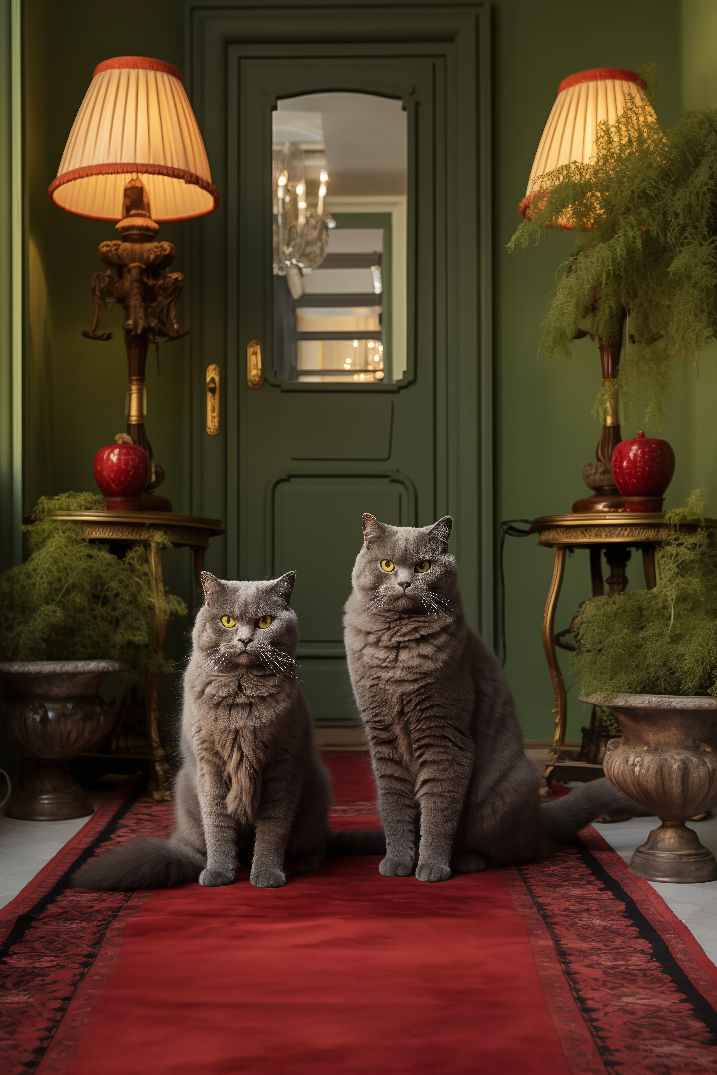
Italian Cat Breeds
Cat breeds popular in Italy today came from other parts of the world, beginning during ancient Roman times.
Most likely the ancestors of the modern domestic cat, Italian Cats during ancient Roman times looked much different from specific breeds as we know them today.
In fact, these early Italians looked similar to African wildcats, small, short-haired wild felines with a slender body and pointed ears.
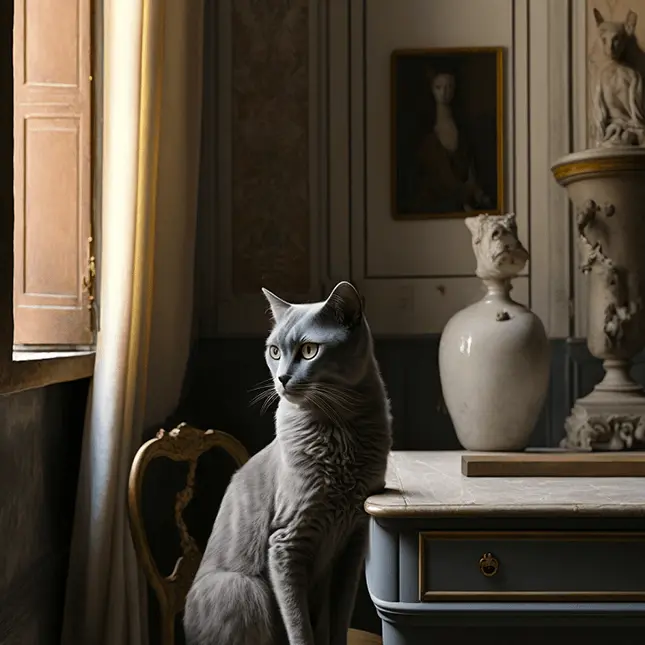
Italian Cat Breeds
The concept of cat “breeds” as we understand it today, came about during modern times. In the 20th century Italians began selectively breeding cats for specific characteristics as they are today. Until then, cats simply worked as animals who kept under control rodent populations.
As the Roman Empire expanded, the Roman army brought cats to other parts of Europe, and eventually, as cats became more popular pets and people started breeding them for different characteristics, different breeds of cats emerged.
Persian Cats
Italy’s Persian cat, a popular breed known for its long, fluffy coat and sweet temperament, likely originated in ancient Persia (modern-day Iran).
Believed to have been introduced to Italy around the 1600s, Persian cats likely came to Europe through trade routes that connected Persia to various European regions.
The long-haired Persian cat breed gained popularity in Europe, and its distinctive appearance and luxurious coat contributed to its widespread appeal. Over time, Persian cats became a favorite among European nobility and aristocracy.
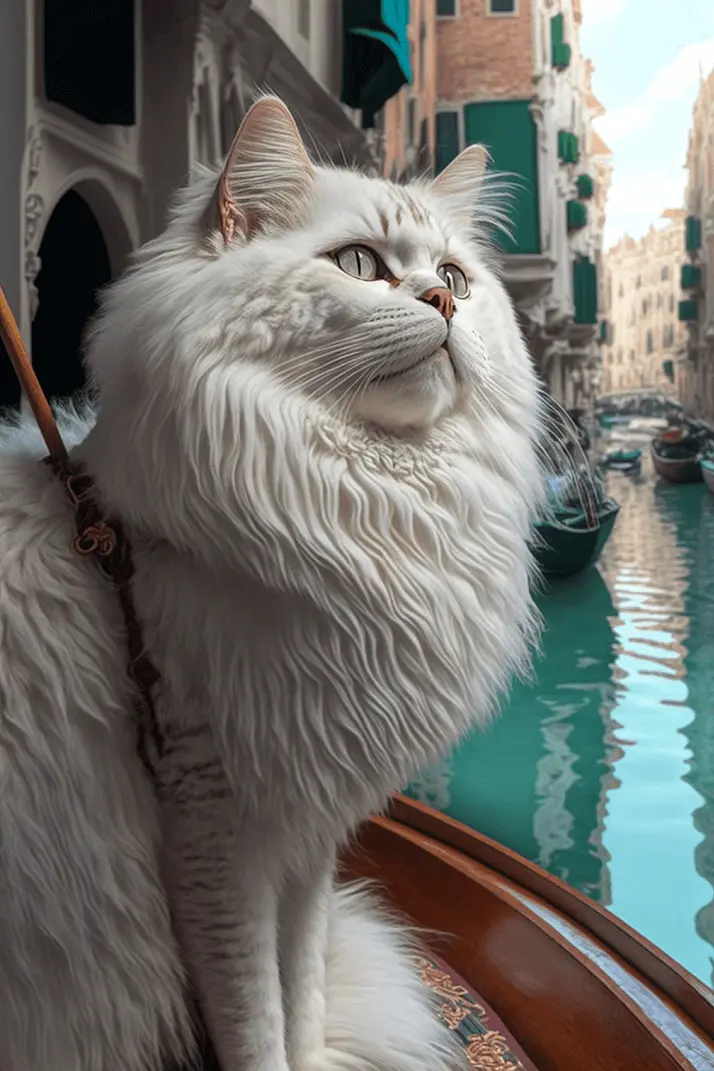
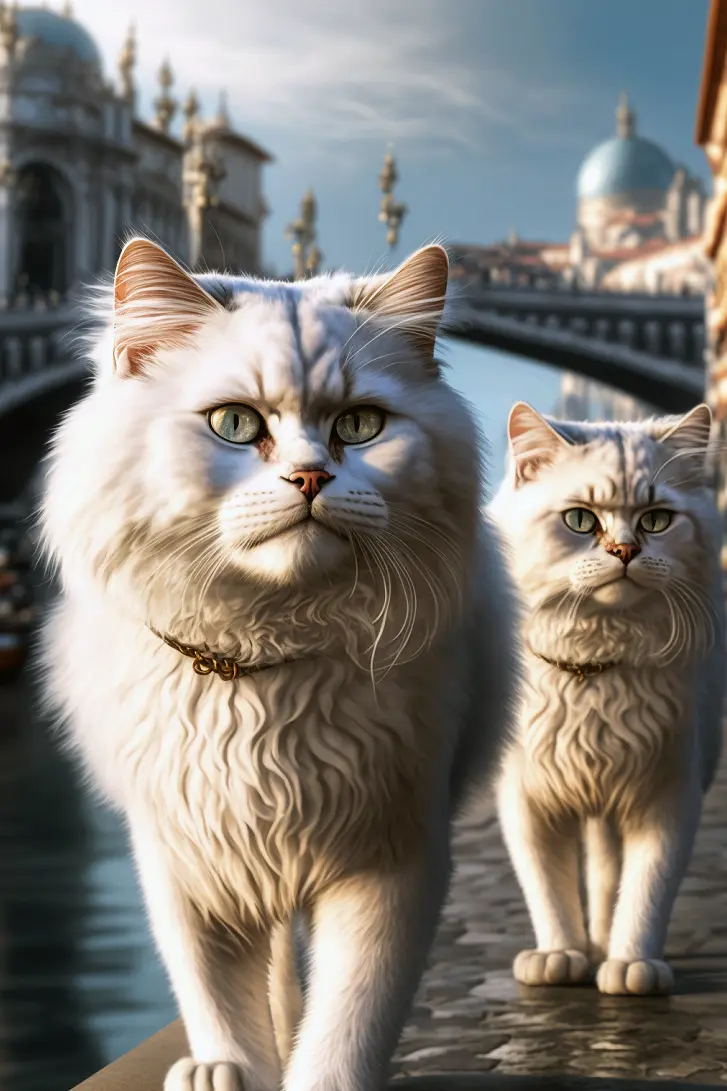
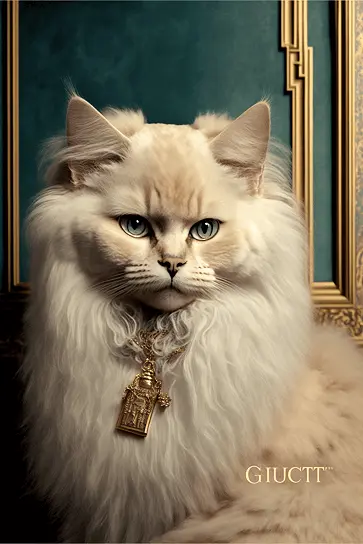
Origin and History of Persian Cats
- Persian cats are one of the oldest cat breeds, originating in Iran (formerly Persia) over 2,000 years ago.
- Persian cats were highly prized by royalty and were often given as gifts between rulers of different countries.
- Persian cats were introduced to Europe in the 1600s and quickly became popular due to their luxurious coats and sweet dispositions.
- Persian cats became particularly popular in Italy, where they were highly prized for their elegant appearance and gentle personalities.


Physical Appearance and Characteristics
- Persian cats are known for their luxurious and long coats that come in a wide variety of colors and patterns.
- Persian cats have distinctive round faces with a short nose, large eyes, and plumed tails.
- Persian cats have a round and cobby body type, with short legs and a wide, round head.
- Persian cats are known for their sweet and gentle personalities and make great companion animals.
- Persian cats are generally easy-going and adaptable and enjoy spending time with their owners.
- Persian cats are typically laid-back and do not require much physical activity, but they do enjoy playing with toys and exploring.

Persian Health Concerns
- Persian cats are prone to certain health issues, including breathing difficulties due to their short noses, eye problems, and skin problems.
- Persian cats may be prone to certain hereditary health conditions, such as polycystic kidney disease (PKD) and hypertrophic cardiomyopathy (HCM).
- Persian cats may be prone to dental problems, so monitor their teeth and provide regular dental care.
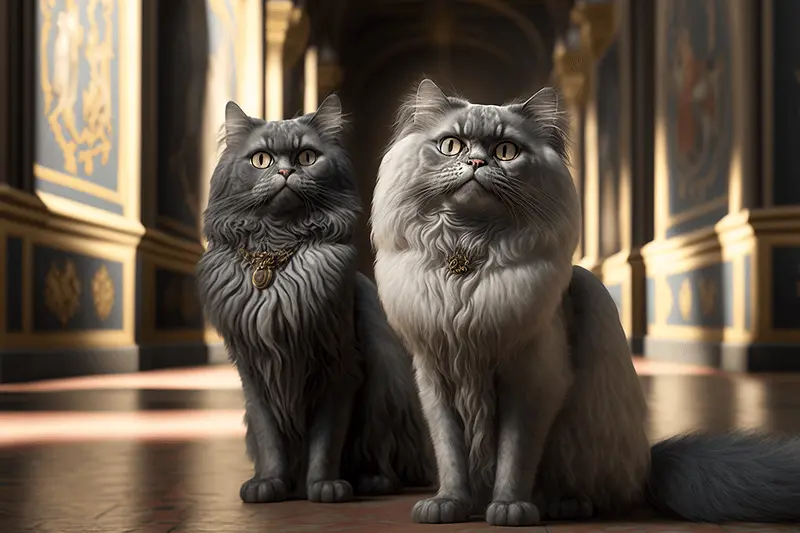
Persian Grooming Requirements
- Persian cats have long and luxurious coats that require regular grooming to prevent matting and tangling.
- Persian cats should be brushed daily to remove loose fur and distribute skin oils.
- Persian cats may also require occasional baths to keep their coats clean and shiny.
Maltese Cats
Though their origins remain shrouded in mystery, Maltese cats reportedly originated in the Central Mediterranean, possibly on the island of Malta, hence the name “Maltese.”
Likely brought to Italy by traders or Phoenician settlers, The Maltese breed became popular among Italian noble families. Over time, Maltese cats began symbolizing Italian cat culture, causing their nomenclature as an “Italian” breed.
However, this reflects a cultural association rather than a reflection of the breed’s national origin. In Italian, a Maltese (Italian: [malˈteːze]) is any primarily, gray or blue cat who is of indeterminate breed.
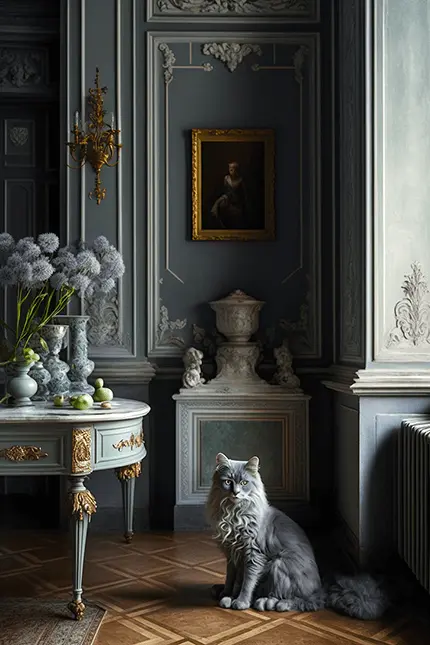

Origin and History of Maltese Cats
- Maltese cats are a breed of domestic cats that originated in Italy.
The breed is named after the island of Malta, where they were highly prized as companions by noblewomen. - Maltese cats have a long history in Italy, where they were bred for their affectionate natures and silky coats.
- Maltese cats became popular in the rest of Europe and the United States in the late 19th century, and are now considered a cherished breed in many countries around the world.
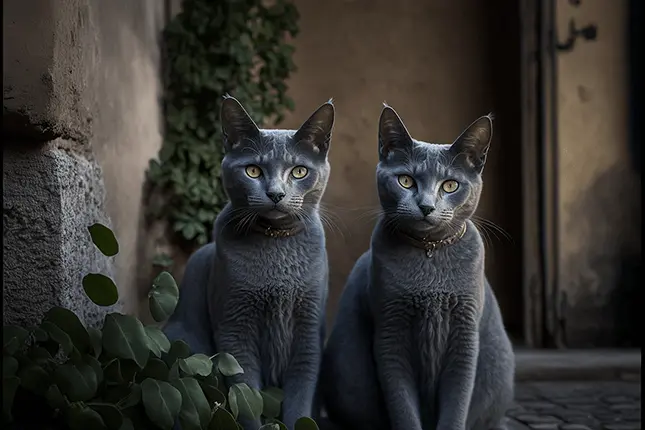
Maltese Physical Appearance and Characteristics
- Maltese cats are known for their silky, long, and fluffy coats that come in a range of colors and patterns.
- Maltese cats have a distinctive round face with large eyes, short nose, and a plush tail.
- Maltese cats are typically small to medium in size, with a round and cobby body type, short legs, and a wide, round head.

Maltese Breed Temperament and Behavior
- Maltese cats are known for their affectionate and playful personalities and make great companions for families and individuals alike.
- Maltese cats are often described as loyal and intelligent and enjoy spending time with their owners.
- Maltese cats are generally easy-going and adaptable and do not require a lot of physical activity, but they do enjoy playing with toys and exploring.
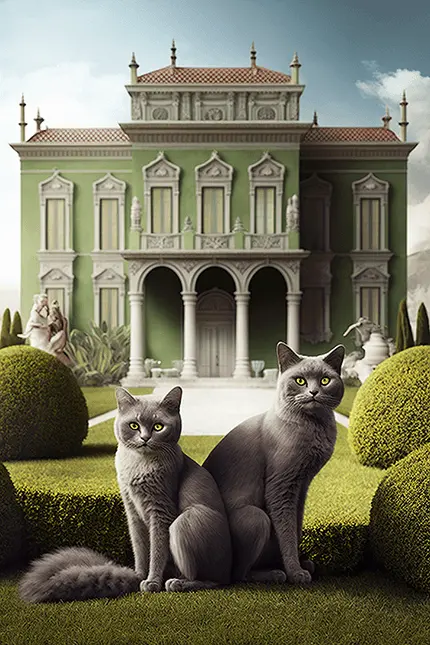
Maltese Breed Health Concerns
- Maltese cats are generally considered to be healthy, but they can be prone to certain health issues, including breathing difficulties due to their short noses, eye problems, and skin problems.
- Maltese cats may also be prone to certain hereditary health conditions, such as polycystic kidney disease (PKD) and hypertrophic cardiomyopathy (HCM).
- Maltese cats are also prone to dental problems, so it is important to monitor their teeth and provide regular dental care.
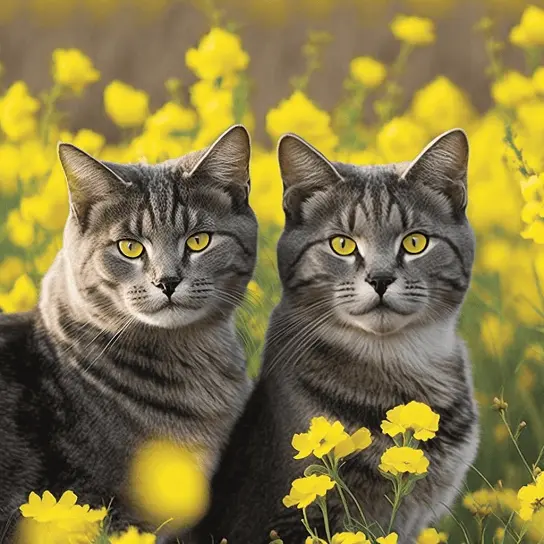
Maltese Grooming Requirements
- Maltese cats have long, silky coats that require regular grooming to prevent matting and tangling.
- Maltese cats should be brushed daily to remove loose fur and distribute skin oils.
- Maltese cats may also require occasional baths to keep their coats clean and shiny.
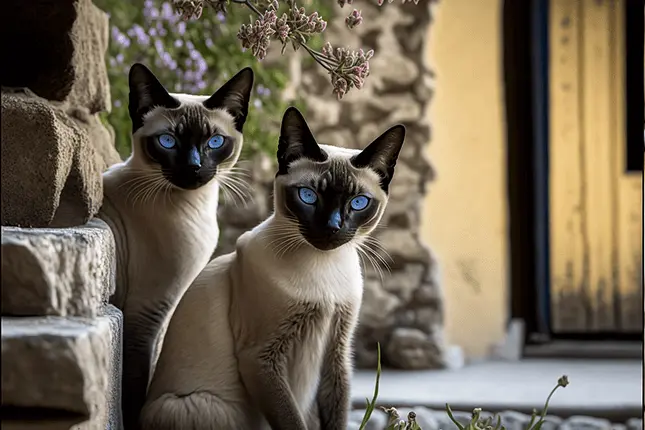
Siamese Cats
One of the most famous Italian cat breeds is the Siamese, which was originally developed in the royal courts of Siam (now Thailand).
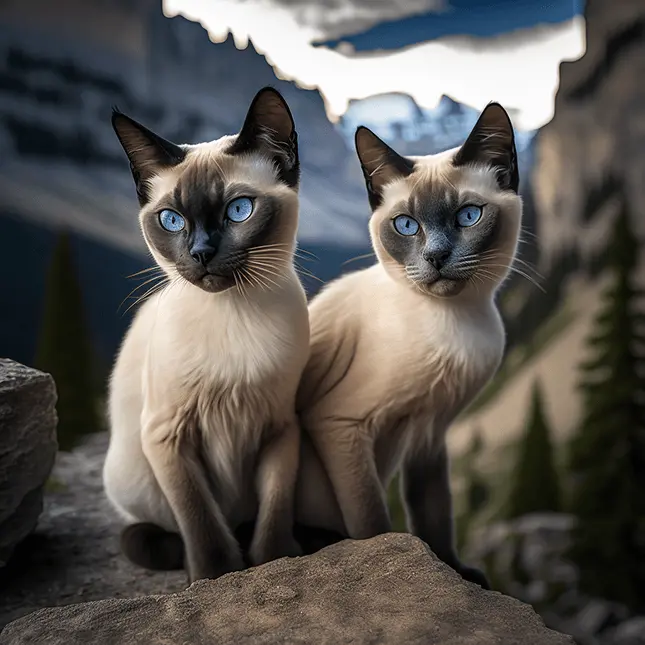
Origin and History of Siamese Cats
- Siamese cats originated in Siam (modern-day Thailand) over 1,000 years ago.
- Siamese cats were highly prized by the royalty of Siam and were considered sacred.
The first Siamese cats arrived in Europe in the late 19th century and quickly became popular due to their unique appearance and affectionate personalities. - Siamese cats became particularly popular in Italy, where they were highly prized for their elegant appearance and affectionate personalities.
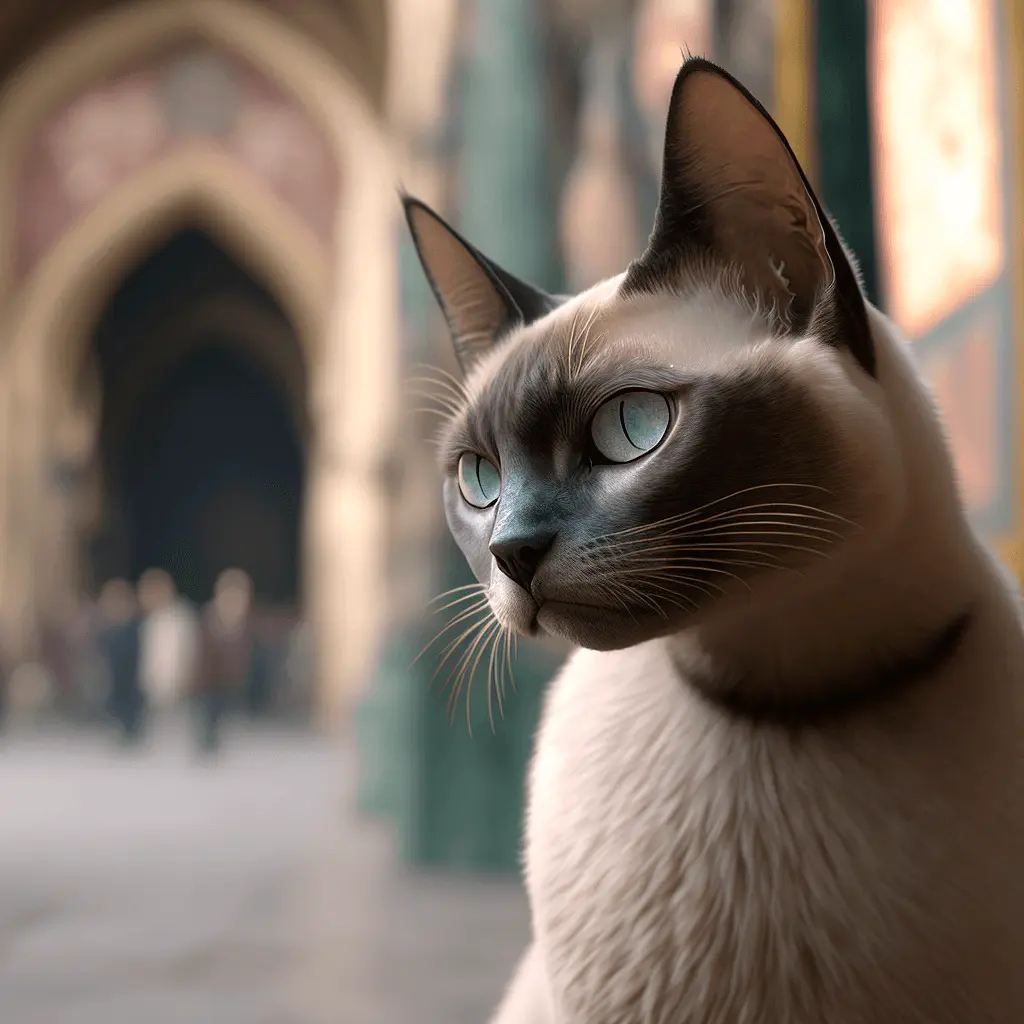
Physical Appearance and Characteristics
- Siamese cats are known for their sleek and slender bodies, long legs, and distinctive triangular-shaped heads.
- Siamese cats have short, smooth coats that come in several colors, including seal, blue, chocolate, and lilac.
- Siamese cats have piercing blue eyes that are large and almond-shaped.
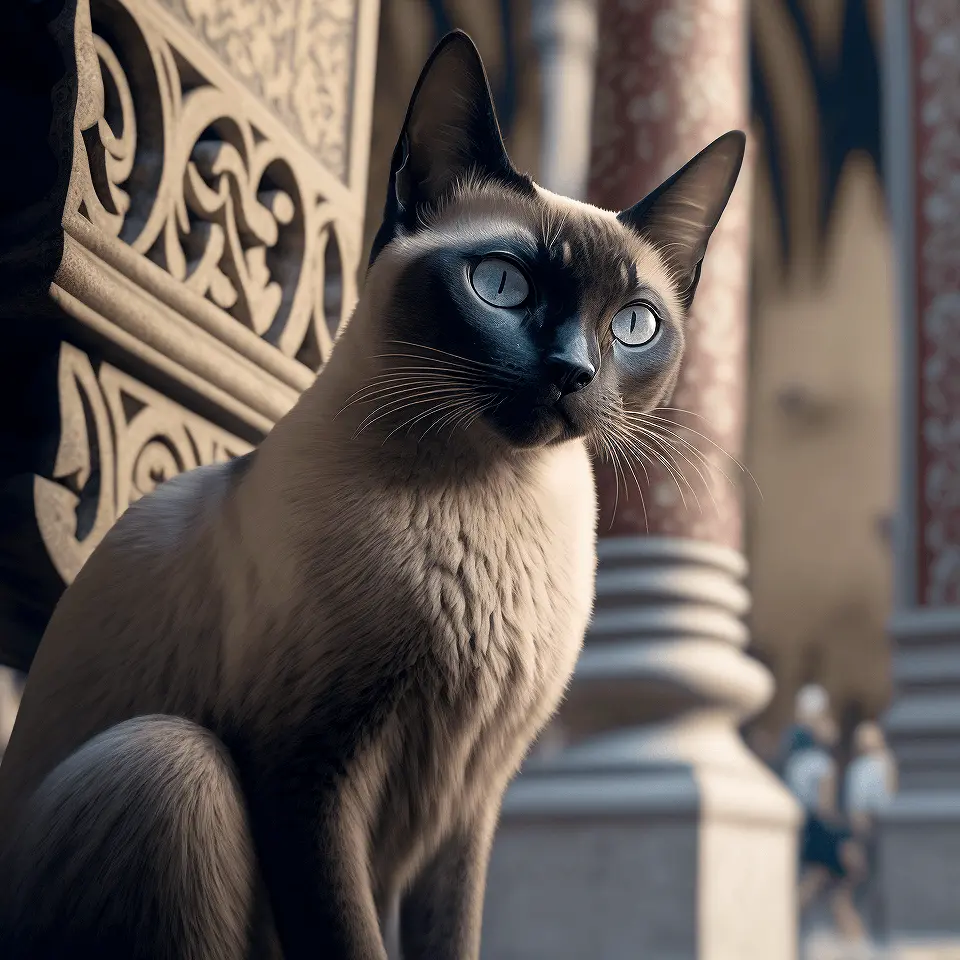
Temperament and Behavior
- Siamese cats are highly intelligent and social, and they enjoy playing and interacting with their owners.
- Siamese cats are known for their affectionate and vocal personalities and may become quite demanding of attention.
- Siamese cats are highly active and playful and enjoy engaging in physical activities such as playing with toys or climbing.
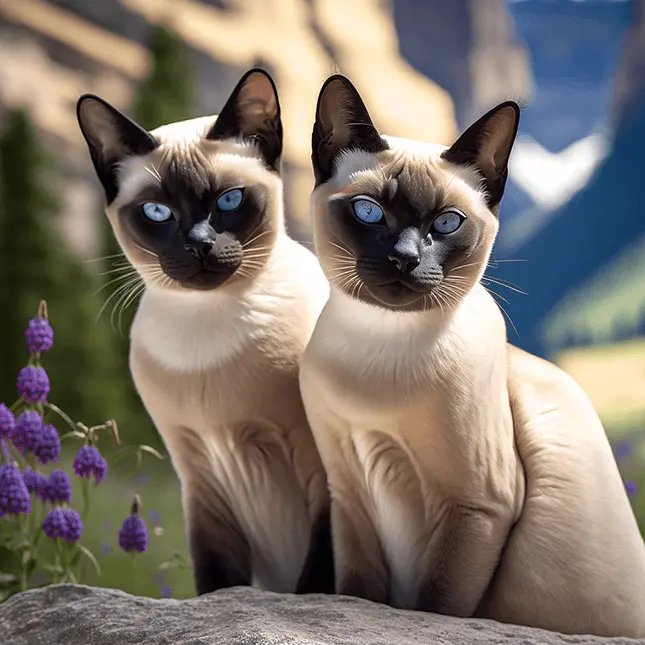
Health Concerns
- Siamese cats are generally healthy, but some health concerns associated with the breed include respiratory problems, dental issues, and eye problems.
- Siamese cats may also be prone to certain hereditary health conditions, such as deafness and progressive retinal atrophy (PRA).
- Siamese cats may also be at risk for obesity, so it is important to monitor their diet and provide regular exercise.

Grooming Requirements
- Siamese cats have short, smooth coats that do not require much grooming. However, it is important to regularly brush Siamese cats to remove loose fur and prevent matting.
- Siamese cats may also require occasional baths to keep their coats clean and shiny.

Chartreux Cats
The Chartreux is a natural breed of cat that is known for its distinctive blue-gray fur and its gentle, affectionate nature. This breed originated in France and has a rich history dating back hundreds of years. In Italy, Chartreux cats are becoming increasingly popular due to their unique appearance and wonderful temperament.
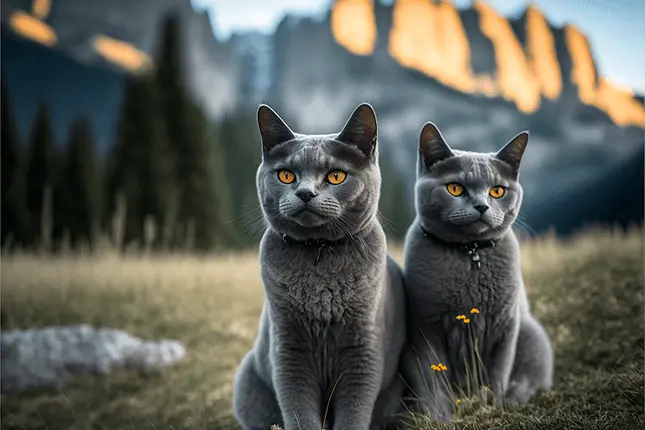
Origin and History of Chartreaux Cats
- The Chartreux is one of the oldest cat breeds, with a history that dates back to medieval times.
- It is believed that the breed was developed by Carthusian monks in the Chartreux Monastery in France, where they were kept for their mouse-hunting skills.
- The breed was later recognized by the French Cat Club in the 1930s, and it has since become one of the most popular cat breeds in France and other parts of Europe.
- The exact timeline of when Chartreux cats first arrived in Italy is not well-documented, but it is believed that the breed has been present in the country for many centuries.
- Despite this long history, Chartreux cats remain relatively rare in Italy and are only beginning to gain popularity in recent years.

Physical Appearance and Characteristics
- The Chartreux is a medium-sized breed of cat that is known for its distinctive blue-gray fur and its sturdy, muscular build.
- The breed has a short, dense coat that feels plush to the touch and requires minimal grooming.
- Chartreux cats have a broad, round head, short, straight nose, and big, round eyes that come in shades of green, gold, or copper.
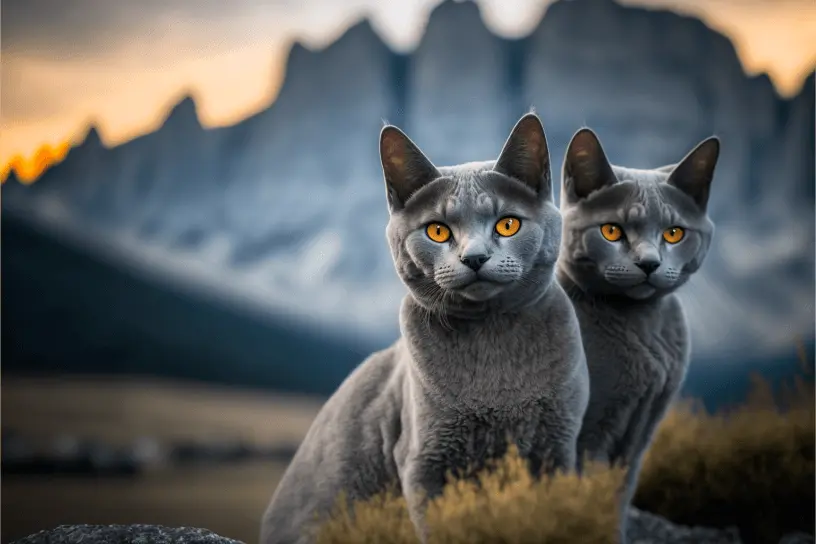
Temperament and Behavior
- Chartreux cats are known for their gentle, affectionate nature and their quiet, peaceful demeanor.
- They are typically not as active or energetic as some other breeds of cats and prefer to spend their time lounging and relaxing.
- Despite this, Chartreux cats are highly social animals and enjoy spending time with their owners and other pets.
- They are also known for their excellent hunting skills and their ability to get along well with children and other animals.
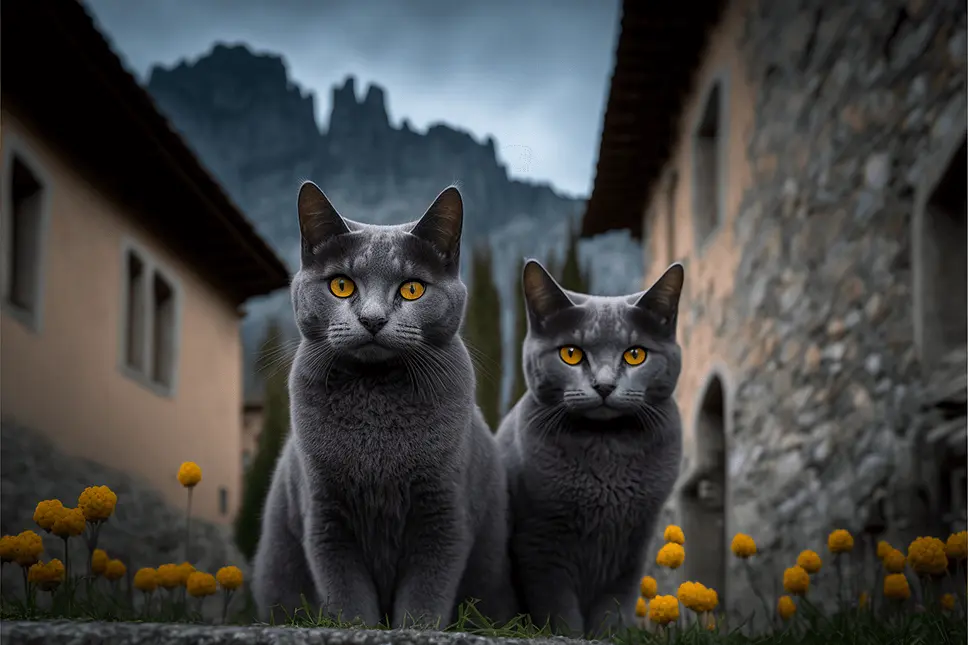
Health Concerns
- Siamese cats are generally healthy, but some health concerns associated with the breed include respiratory problems, dental issues, and eye problems.
- Siamese cats may also be prone to certain hereditary health conditions, such as deafness and progressive retinal atrophy (PRA).
- Siamese cats may also be at risk for obesity, so it is important to monitor their diet and provide regular exercise.
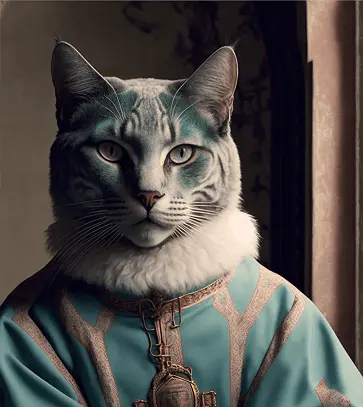
Grooming Requirements
- Due to their short, dense coat, Chartreux cats require very little grooming.
- Owners should brush their cat’s fur regularly to remove any loose hair and to help keep their skin and coat healthy.
- Additionally, Chartreux cats should be bathed periodically to remove any dirt or debris that may have accumulated in their fur.
- Owners should also be sure to keep their cat’s ears clean and to provide regular nail trims to prevent overgrown nails.
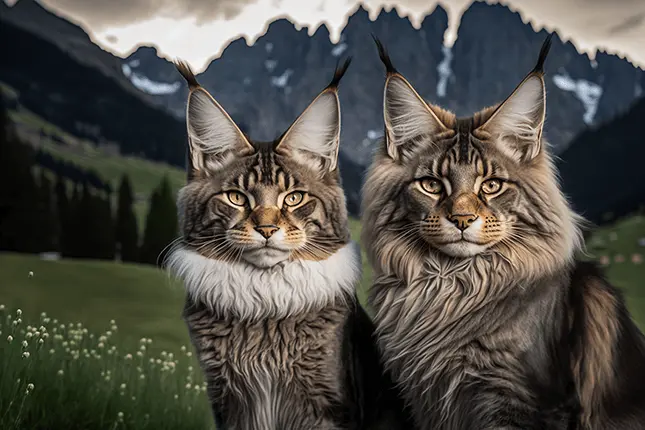
Maine Coone Cats
The Maine Coon is a native American breed, originating from the state of Maine in the United States.
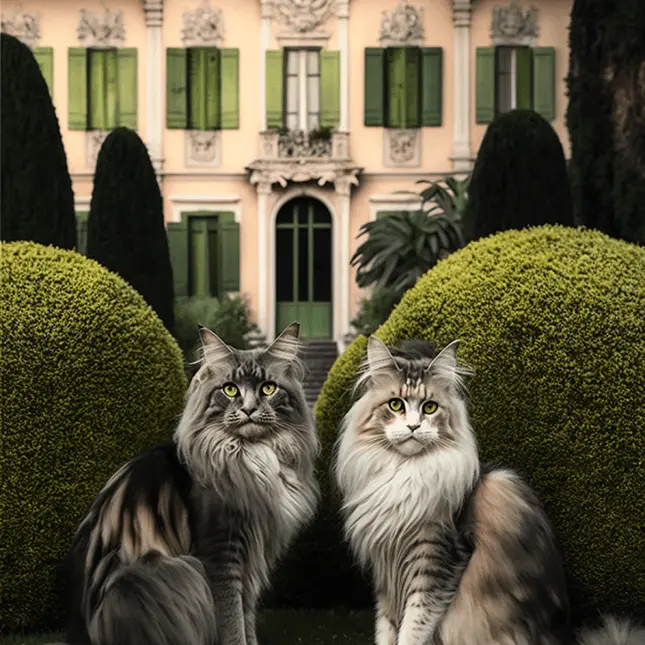
Origin and History of Maine Coone Cats
- The Maine Coon is a native American breed, originating from the state of Maine in the United States.
- The exact origin of the breed is uncertain, but there are several popular theories. One theory is that the breed is a result of natural selection from feral cats in the state of Maine. Another theory is that the breed was the result of breeding between domestic cats and semi-feral cats.

Physical Appearance and Characteristics
- The Maine Coon is a large breed, with adult males typically weighing between 9 and 18 pounds, and adult females weighing between 7 and 12 pounds. They have a sturdy, muscular build, with broad shoulders, a long body, and a long, bushy tail.
- The breed is known for its silky, soft, and shiny coat, which comes in a variety of colors and patterns, including solid, tabby, and tortoiseshell. They also have large, expressive eyes, which can be green, blue, or gold, and tufted ears that are tipped with tufts of fur.
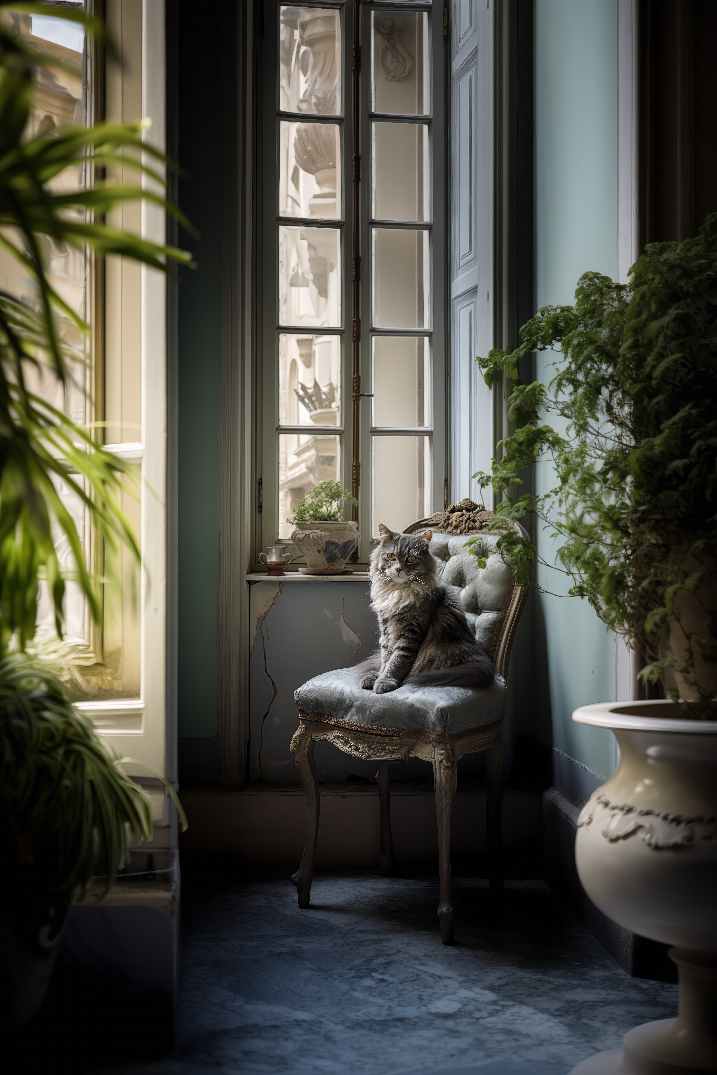
Temperament and Behavior
- Maine Coon cats are known for their friendly, affectionate, and social nature. They are typically very outgoing, and they love to be around people and other animals. They are also known for their playfulness, and they enjoy playing with toys and climbing and exploring.
- The breed is also known for its intelligence and trainability. Many Maine Coon owners have successfully trained their cats to perform tricks and play fetch.
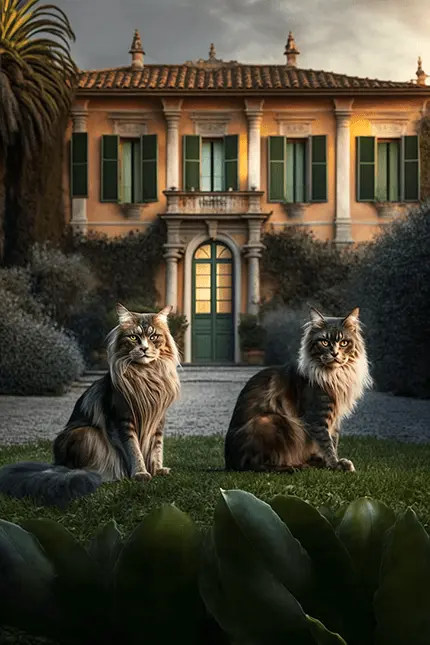
Health Concerns
- Maine Coon cats are generally healthy, but like all breeds, they are prone to certain health problems. Some common health concerns for the breed include hip dysplasia, heart disease, and a genetic disorder called hypertrophic cardiomyopathy (HCM).
- It is important to have your Maine Coon cat regularly checked by a veterinarian, and to provide them with a balanced and nutritious diet to help keep them healthy.
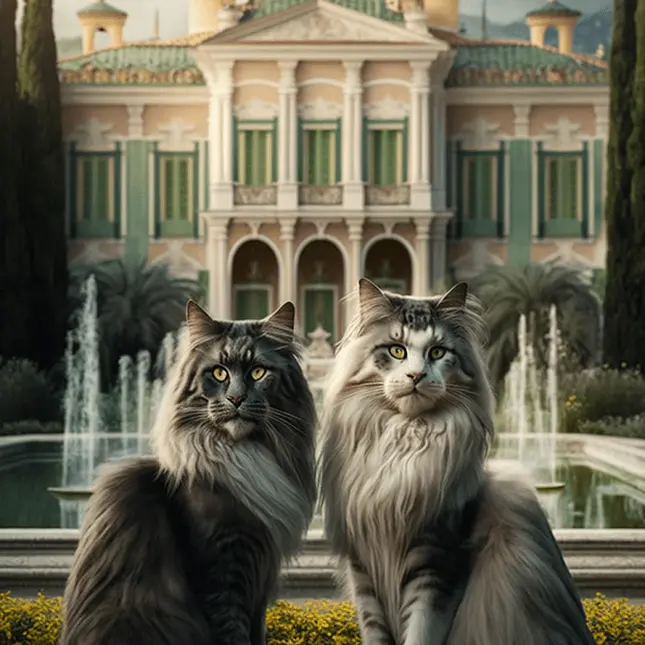
Grooming Requirements
- Maine Coon cats have a thick and silky coat, which requires regular grooming to keep it in good condition. The breed is known for its heavy shedding, and regular grooming will help to minimize the amount of loose hair that ends up around your home.
- In addition to regular grooming, it is also important to keep your Maine Coon’s nails trimmed, and to brush their teeth regularly to maintain good oral hygiene.
Original Italian Cat Breeds
Although there are no truly original Italian cat breeds, many cat breeds are associated with Italy, have Italian bloodlines, or have been further developed in Italy. Some of these breeds include:
- Persian cats: Persian cats are one of the oldest and most popular cat breeds in the world. They were brought to Italy from Persia (now Iran) in the 16th century and quickly became popular among the Italian nobility.
- Siamese cats: Siamese cats are thought to have originated in Siam (now Thailand), but they were imported to Europe and became popular in Italy in the 19th century.
- Bengal cats: Bengal cats are a hybrid breed created by breeding an Asian leopard cat with a domestic cat. They were first developed in the United States, but they have since become popular in Italy and other parts of Europe.
- Sphynx cats: Sphynx cats are a breed of hairless cats that originated in Canada, but they have since become popular in Italy and other parts of the world.
- British Shorthair: The British Shorthair is one of the oldest and most recognizable cat breeds in the world. Some British Shorthairs have Italian bloodlines, as Italian cat fanciers have been importing and breeding British Shorthairs in Italy for many years.
- Devon Rex: The Devon Rex is a breed of cat that originated in England. However, the breed was developed in Italy by Italian cat fanciers, who imported the first Devon Rex cats to Italy from England in the 1970s.
- Scottish Fold: Scottish Folds were first imported to Italy from Scotland in the 1970s, and Italian cat fanciers have been breeding them ever since.
- American Shorthair: American Shorthairs have been imported to Italy from the United States and have become popular among Italian cat fanciers.
- Maine Coon: Maine Coons are an American cat breed that has become popular in Italy in recent years.
- Exotic Shorthair: The Exotic Shorthair is a breed of cat that was created by breeding a Persian cat with an American Shorthair. Some Exotic Shorthairs have Italian bloodlines, as they have been imported to Italy and bred by Italian cat fanciers.
- European Shorthair: European Shorthairs are a breed of cat that was developed in Europe, including Italy, by breeding different types of domestic cats.
There are many other breeds that have been developed or imported to Italy, so this list is not exhaustive.
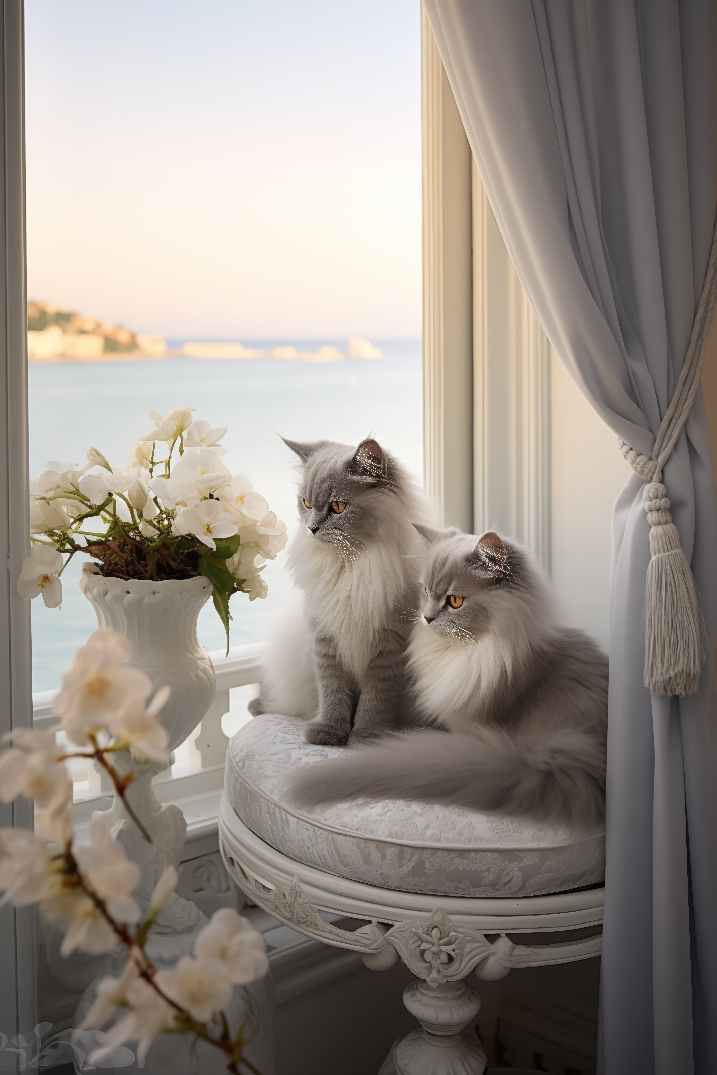

MOST POPULAR ITALIAN CAT NAMES
Italian cat names can be appealing for a variety of reasons.
Some people may choose an Italian name for their cat because they have a personal connection to Italy, such as having family from there or having visited the country.
Others may choose an Italian name because they appreciate the language and culture of Italy.
Italian names can also be seen as elegant, sophisticated, and unique, which can be an appeal to cat owners.
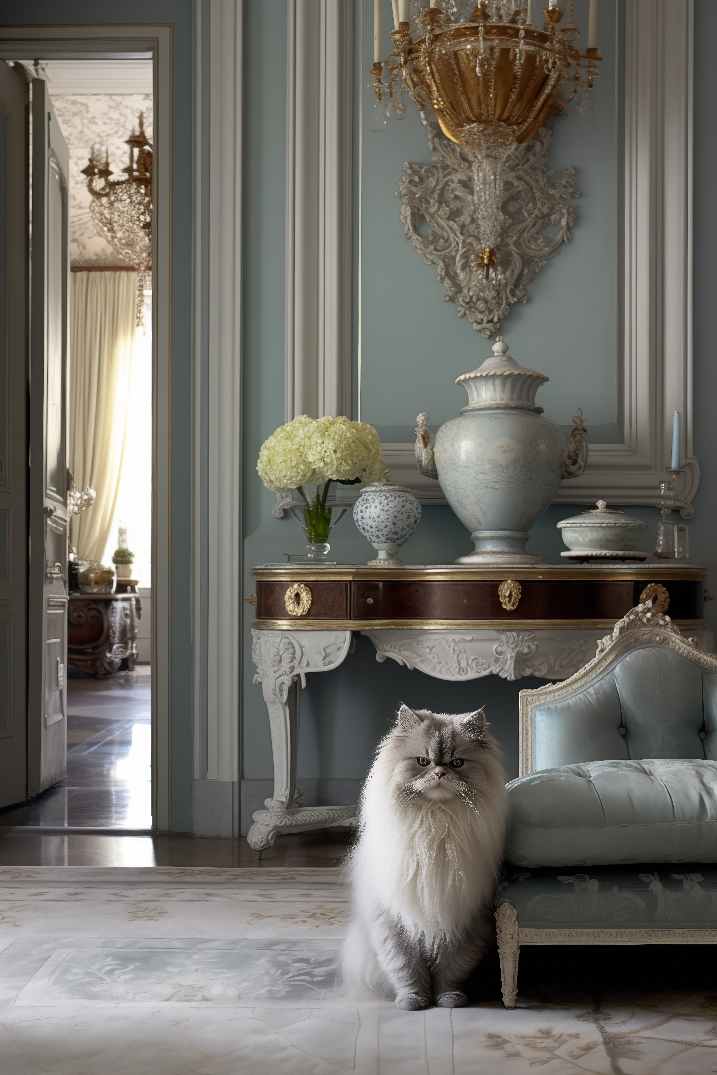

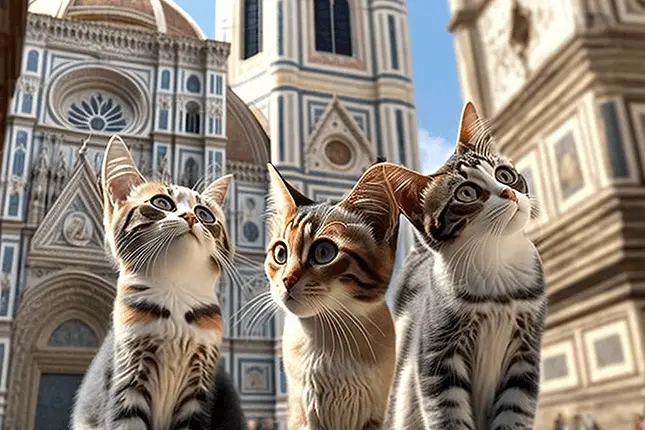
Italian Cat Names
- Bella (meaning “beautiful”)
- Luna (meaning “moon”)
- Giada (meaning “jade”)
- Sofia (meaning “wisdom”)
- Marco (meaning “warrior”)
- Giorgio (meaning “farmer”)
- Bianca (meaning “white”)
- Davide (meaning “beloved”)
- Mario (meaning “warrior”)
- Francesca (meaning “free one”)
Some people may choose an Italian name for their cat because they have a personal connection to Italy, such as having family from there or having visited the country.
Others may choose an Italian name because they appreciate the language and culture of Italy.
Italian names can also be seen as elegant, sophisticated, and unique, which can be an appeal to cat owners.
Italian Boy Cat Names
- Adolfo (Noble, majestic wolf)
- Alessandro (Defender of mankind)
- Alessio (defender)
- Aldo (Old)
- Alberto (Bright, nobility)
- Andrea (manly)
- Anatolio (Sunrise, dawn)
- Angelo (messenger of God)
- Antonio (beyond praise)
- Augusto (Great, venerable)
- Badare (Meaningful, to look after)
- Bacio (Kiss)
- Benito (Blessed)
- Carlo (free man)
- Cosmo (The universe)
- Dante (Everlasting, enduring)
- Domenico (belonging to the lord)
- Drago (Dragon)
- Enzo (ruler of the household)
- Esatto (Exact)
- Fabian (Bean grower)
- Filippo (lover of horses)
- Franco (free)
- Gabriele (God is my strength)
- Giorgio (farmer)
- Giovanni (God is gracious)
- Giuseppe (God will increase)
- Guido (Forest guide)
- Horace (Time keeper)
- Leonardo or Leo (Lion)
- Luigi (Famous in war)
- Lupo (Wolf)
- Marco (warlike)
- Mario (Sailor)
- Mattone (Brick, solid)
- Nero (black)
- Paolo (small)
- Pelo (Hair or fur)
- Pietro (rock)
- Raffaele (God has healed)
- Roberto (bright fame)
- Rocco (Rest)
- Ruggiero (Famous warrior)
- Salvatore (savior)
- Sonno (Sleep)
- Stefano (A crown, garland)
- Tenero (Tender)
- Tommaso (twin)
- Vito (life)
- Vittorio (conqueror)
- Volpe (Fox)
- Zitto (Quiet)
Italian Girl Cat Names
- Adriana (dark one)
- Adrina (Happiness)
- Alessandra (protectress of mankind)
- Alda (Long lived)
- Alba (Dawn)
- Albina (White skinned)
- Ammir0 (I admire)
- Aurora (dawn)
- Aurelia (Golden)
- Bambi (Child)
- Bella (beautiful)
- Benedetta (blessed)
- Bianca (White)
- Camilla (Unblemished character)
- Carlotta (Strong)
- Carina (dear, lovely)
- Callisto (Most beautiful)
- Donatella (Beautiful star)
- Elisa (God is my oath)
- Evangelina (Bringer of good news)
- Farfalle (Butterfly)
- Florentina (Flower)
- Gatta (cat)
- Ginevra (white wave)
- Giada (jade)
- Isabella (God is my oath)
- Italia (Italy)
- Lucia (Light)
- Luna (moon)
- Marta (lady)
- Martina (warlike)
- Marzia (warlike)
- Nera (black)
- Ottavia (Born eighth)
- Olympia (From Olympus)
- Pia (Pious)
- Prima (First born)
- Quorra (Heart)
- Rosa (rose)
- Rosalina (gentle rose)
- Simona (listening)
- Sirena (mermaid)
- Sofia (wisdom)
- Stella (Star)
- Teresa (harvester)
- Torta (Italian cake)
- Uffa (An Italian sigh of distress)
- Valentina (Vigorous, powerful)
- Vita (life)
- Viola (purple)
- Zola (Ball of earth)
10 Proven Ways to Improve Your Health and Wellness in 2025 In today’s fast-paced
50 Boho Bedroom Ideas for a Cozy Bohemian Retreat Transform your bedroom into a
Mid-Century Modern Bedroom Ideas Mid-century modern bedrooms sweep you into a vibrant era that
